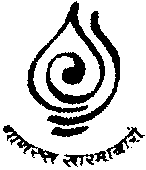
That which is real in this world is and that which is not is not. To be is reality and not to be is non reality. All philosophers and realists have reflected on existence. They have not only reflected, they have also analysed it. The main job of philosophy is to analyse reality.
Nyaya, Vaisheshika, Mimamsa and Vedanta are the important Vedic philosophies. The Nyaya philosophers accept sixteen realities and the Vaishesikas, six. The Vitual theory dominates Mimamsa philosophy. Its analysis of reality cannot be summarized so easily. According to Vedanta the supreme reality is Param Brahman. Sankhya was in older time’s part of the shramana tradition but is now part of the Vedic tradition. According to it there are twenty five realities. According to Carvaka philosophy, there are four realities.
Malankaputra was the disciple of Lord Buddha. He asked the Buddha, "What happens after death?' Is there a soul or not? Is this world finite or infinite? Asked the Buddha, "What will you do knowing this?" He said, "I want to know the reason. You give me a reply or else I will think of joining another faith. Either you say you do not know these things or explain them if you know. I took initiation because I was seeking truth but I am not finding an answer to my enquiry."
Said the Buddha, "When did I say I would answer such questions and that you should follow me?"
Malankaputra said, "You did not say it..."
Said the Buddha, "Then why are you glaring at me? Look, one man shot an arrow at another. A doctor comes along and tells him to remove the arrow and begin treatment. But that man says that he will not remove the arrow till he finds out who shot it, how well built was he? How powerful was he? What was his colour? Why did he shoot the arrow? What was his bow like? Which bow did he use? How pointed was it? How long was its tail? Till I know all this I will not remove the arrow. Tell me, is there wisdom in what he said?"
Malunkaputra said, "He will die. Even before he removes the arrow he will die."
Replied the Buddha, "That is why I am advising you to remove the arrow. There is no need to indulge in imagining what kind of bow it was, who shot the arrow and so on. The need is to remove the arrow. Get involved in those problems which are of immediate concern. What is sorrow? What is the cause of sorrow? What is nirvana and what is its cause? What are these four Noble Truths (arya sat). Try to know only these."
In the context of previously established analyses and discussions I will now proceed to analyse Bhagvan Mahavira's explanation of reality. Initially I would like to point to a certain kind of thinking. Some contemporary historians and philosophers consider Jain philosophy to be indebted to philosophies like Vaishesika, Sankhya and other schools of thought.
Some scholars say that the realist philosophy of the Jain has come down from Maharishi Kanad. Some scholars opine it is but a new presentation of Sankhya philosophy. Jain metaphysics is not original. Why do such opinions arise? It is important to understand that. They are either ignoring the historical aspect or are biased in favour of some school of thought. One of the two has got to be true.
The master told his gardener, "Go, water the garden." replied the gardener, "Sir why is it required? It is raining,“ replied the master, "If you are scared of the rain then take an umbrella." Now tell me why should he water the garden when it is raining? But the master is telling him to do so. By telling him to take an umbrella if he is afraid of getting wet, he is actually exhibiting his knowledge on the use of the umbrella and his ignorance about the fact that rain irrigates. Either he does not know, or he is pretending not to know. In my understanding there are two aspects: the first is the suggestion of an umbrella and the second the refusal to understand that rain irrigates.
Maharishi Kanad wrote the Vaishesika sutra after Bhagvan Mahavira. Sankhya philosophy developed after Bhagvan Parshavnath and around the time of Bhagvan Mahavira. But with respect to the analysis of reality, the perceptions of Sankhya and Jainism are independent. But it is not possible to say which gave to which: Jain philosophy to Sankhya philosophy or vice-versa. Sankhya philosophy propounds the theory of a creator and this hypothesis is based on its fundamental metaphysical classification. Jain philosophy propounds the theory of substance and modes. Its metaphysical classification asserts some such categories of truth, which are entirely different from the dualistic classification of prakriti (matter) and purusha (soul) of Sankhya philosophy.
 Acharya Mahaprajna
Acharya Mahaprajna


